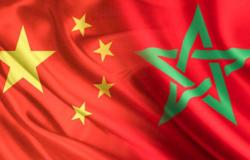A new wind blows on the Moroccan coasts. The launch, a few days ago, of an international call for tenders for the creation of the largest African shipyard in Casablanca, marks a decisive stage in the rise of Moroccan port infrastructure. Through this operation, Morocco intends to consolidate its maritime autonomy, while positioning itself as a continental leader in naval engineering.
Under the aegis of the National Agency for Ports (ANP), the project of the future Casablanca shipyard presents itself as a real pivot of the maritime strategy of the kingdom. The call for tenders, open to experienced international companies, relates to a concession of thirty years and aims for the design, equipment, operation and maintenance of this colossal infrastructure. It will include, among other things, a dry hold of 244 meters long by 40 meters wide, capable of accommodating high seas ships, an lifting platform of 9,000 tonnes, a pool equipped with a 450 -ton portico, as well as 820 meters of quays for armament and maintenance operations.
The whole will extend over 21 hectares of backfilled terrain, dedicated to logistical and industrial support. An investment of $ 300 million will erect this unique infrastructure, called to become a major lever for industrialization and upmarket of the national productive fabric.
This shipyard is not an isolated project, but is part of a global strategy for strengthening industrial and military sovereignty in Morocco. It will allow to maintain the buildings of the Royal Navy on national soil, while attracting commercial ships from West Africa and the Mediterranean perimeter, which is mainly directed towards European ports for their maintenance operations.
Read also: Naval Industry: Strengthening of Morocco-Korea Cooperation
If Casablanca now carries the naval ambition of the kingdom, it is in Tangier Med that Morocco has, for two decades, demonstrated its ability to play in the big leagues. Having become in a few years the first port of Africa, Tangier Med is today a global logistics platform interconnected at more than 180 ports on five continents. In 2024, he crossed the threshold of the 8 million EVP contaited containers, a record on the continent, and is now established as a privileged gateway to Euro-African and Transatlantic Trade.
Tangier Med is not only a container port. It has become an industrial ecosystem in its own right, bringing together more than 1,100 companies in sectors as varied as the automobile, aeronautics, logistics, or chemistry. The training effect on the national economy is considerable, both in terms of jobs and technological transfers. It embodies the model of a port infrastructure thought not as a simple crossing point, but as a real engine of economic transformation.
Dakhla Atlantique: the strategic expectation of a port in the making
Further south, another project draws the attention of the international community: the port of Dakhla Atlantique. Always under construction, this future logistics hub has already aroused, in 2024, more than a thousand visits to officials, experts and foreign delegations, from all of Africa, Europe, Asia and the Middle East. Everyone agrees that this project, once completed, could deeply upset the commercial roads of West Africa.
Located in a strategic area between Morocco and sub -Saharan Africa, the port of Dakhla Atlantique is designed to accommodate both commercial and industrial fishing, agricultural and mining, and logistical support activities for energy projects. It aims to become a regional integrated service platform, capable of attracting flows today captured by the ports of Dakar or Abidjan. In the long term, it could even play a central role in strengthening North-South economic corridors, in connection with major Moroccan road and rail infrastructures.
On the Mediterranean facade, the port of Nador West Med, whose work is progressing quickly, completes the strategic network of Morocco. Like Tangier Med, it aims to become a major energy and industrial hub, focused in particular on the trafficking of petroleum products, solid and liquid reals, as well as on containers. The stake is twofold: unclogging the flows of Tangier Med and offering a new interface to Euro-Mediterranean exchanges.
Thanks to its proximity to southern Europe and its connection to interior logistics corridors, Nador West Med should strengthen the attractiveness of northeast Moroccan and promote the emergence of new industrial zones, turned towards export and innovation.
Through these large -scale port projects, Morocco traces a clear trajectory: making the sea a border, but an engine of growth, sovereignty and influence. From Casablanca to Dakhla, via Tangier and Nador, it is an integrated vision of ports as vectors of industrial development, job creation and integration in the global value chains that is set up.








